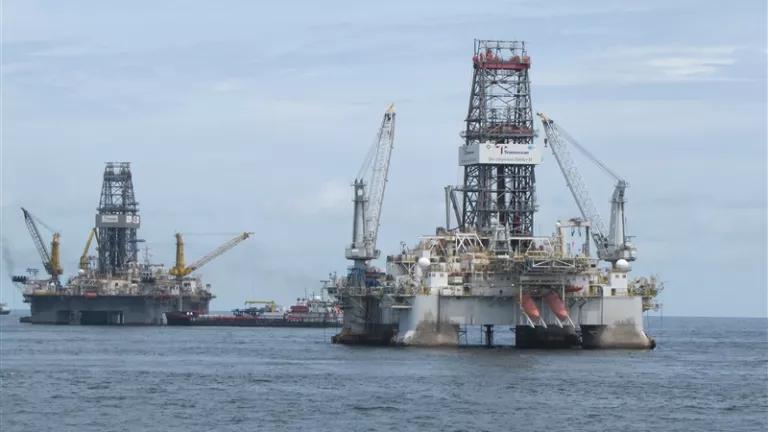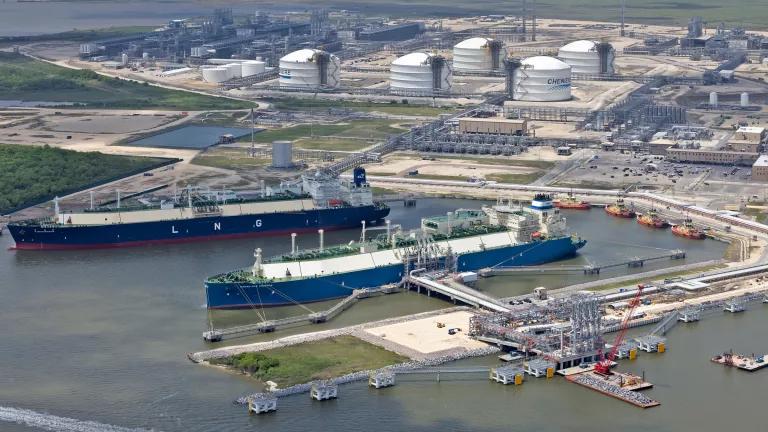Oil Companies Are Sitting on Huge Offshore Reserves
Even without any new offshore lease sales, there is enough oil and gas in existing leases in the Gulf of Mexico that production at current levels could continue for more than a decade.

Oil and allied industry groups like the American Petroleum Institute and the National Ocean Industries Association were making headlines again last week seeking to take advantage of the Ukraine crisis. This time it was to try to convince the public and policymakers that there’s a pressing need for new offshore leasing and that the lack of recent or planned lease sales in the Gulf of Mexico would lead to cataclysmic decline in offshore oil and gas production. That couldn’t be farther from the truth.
In reality, even without any new offshore lease sales, there is enough oil and gas in existing leases in the Gulf that production at current levels could continue for more than a decade.
Oil and gas companies acquire leases to drill in our federal ocean areas under a federal program that is developed every five years. The current five-year program, finalized under the Obama administration, expires at the end of June, and the Bureau of Ocean Energy Management (BOEM) is working to draft a new leasing program to replace it. There will likely be a span of time during which there is no five-year program with proposed lease sales is in place.
This is far from an economic catastrophe, despite the oil companies’ cries of panic. Offshore activity accounts for 15 percent of total domestic oil production and around 3 percent of total U.S. natural gas production. In our federal waters, oil and gas companies already have the rights to 11 million acres of ocean for drilling, and they are using less than a quarter of that to drill on. In these leased areas are 4,652 million barrels of “proved plus probable” oil reserves and 6,103 billion cubic feet of natural gas reserves for a combined total of 5,740 million barrels of oil equivalent. “Proved plus probable” reserves means that they are “discovered, recoverable, commercial and remaining” and economically viable under current conditions. In addition to these, there are substantially greater amounts of “discovered” oil and gas resources.
Because of these significant leased resources, offshore production is projected to remain high even without leasing new areas. According to a forthcoming analysis from energy firm OnLocation, production in the Gulf of Mexico, where almost all offshore production occurs, is projected to increase for the next five years and not dip below 2021 levels until 2034. Analysts at Rystad Energy, a business intelligence and research firm, also analyzed the impacts of no new leasing and projected similar results.
The oil companies are playing us—and the planet—for suckers. They are determined to lock in drilling for decades to come. Once leases are issued, they are very difficult to terminate, and investments are sunk into infrastructure virtually guaranteeing a certain level of carbon emissions over a period of years or decades—thus, gravely undermining our hopes of stemming climate change. The United States must significantly reduce its current level of fossil fuel exploitation and not expose new areas to the damage and dangers of drilling, if we are to meet our climate action commitments. And, as the President articulated forcefully articulated last week, we need to build out clean and affordable energy sources so that we are no longer at the mercy of the oil industry and foreign governments.
In the meantime, oil companies have plenty of oil and gas in existing leases offshore to supply our current energy needs—they don’t need to continue buying up our public resources at a steep discount and polluting our planet.




